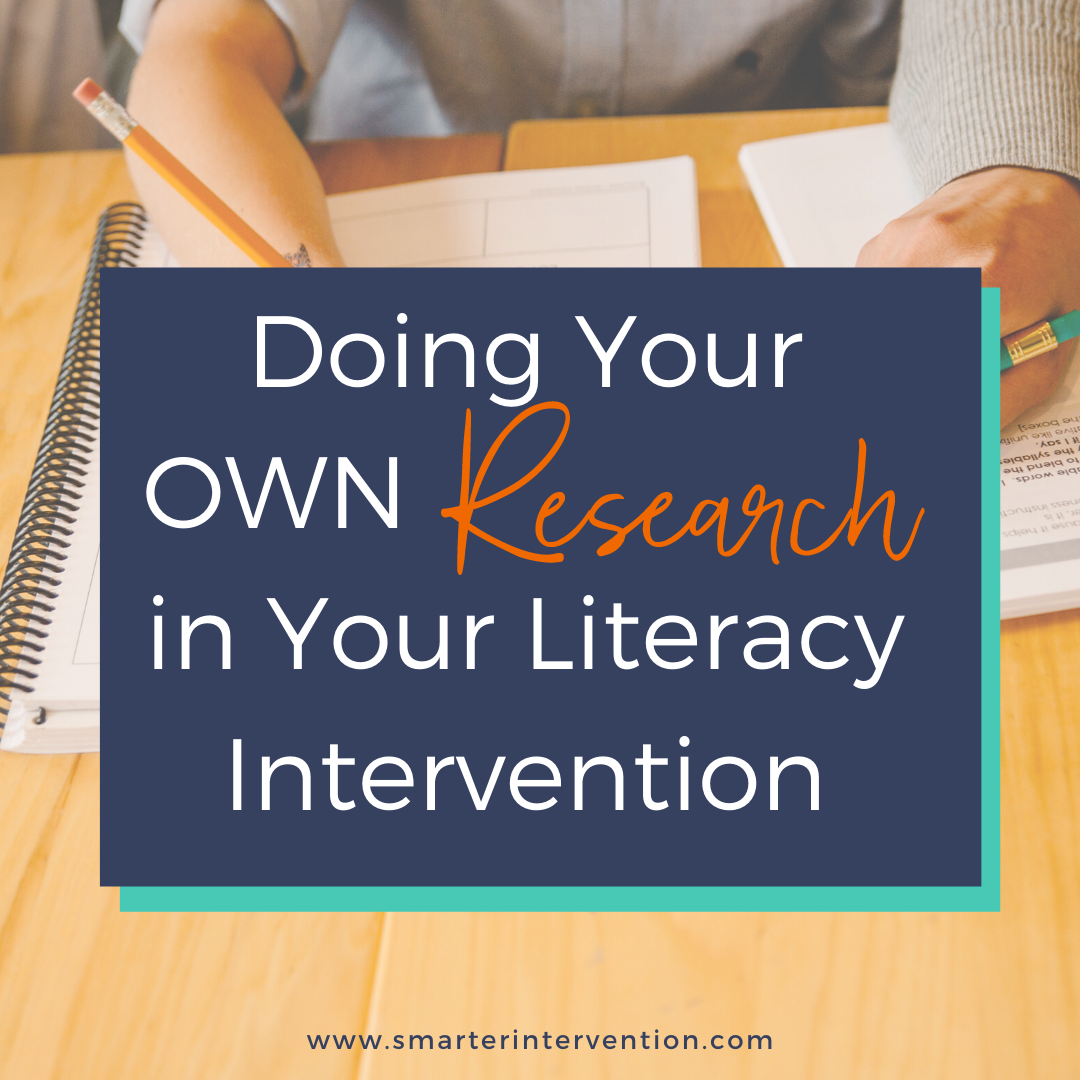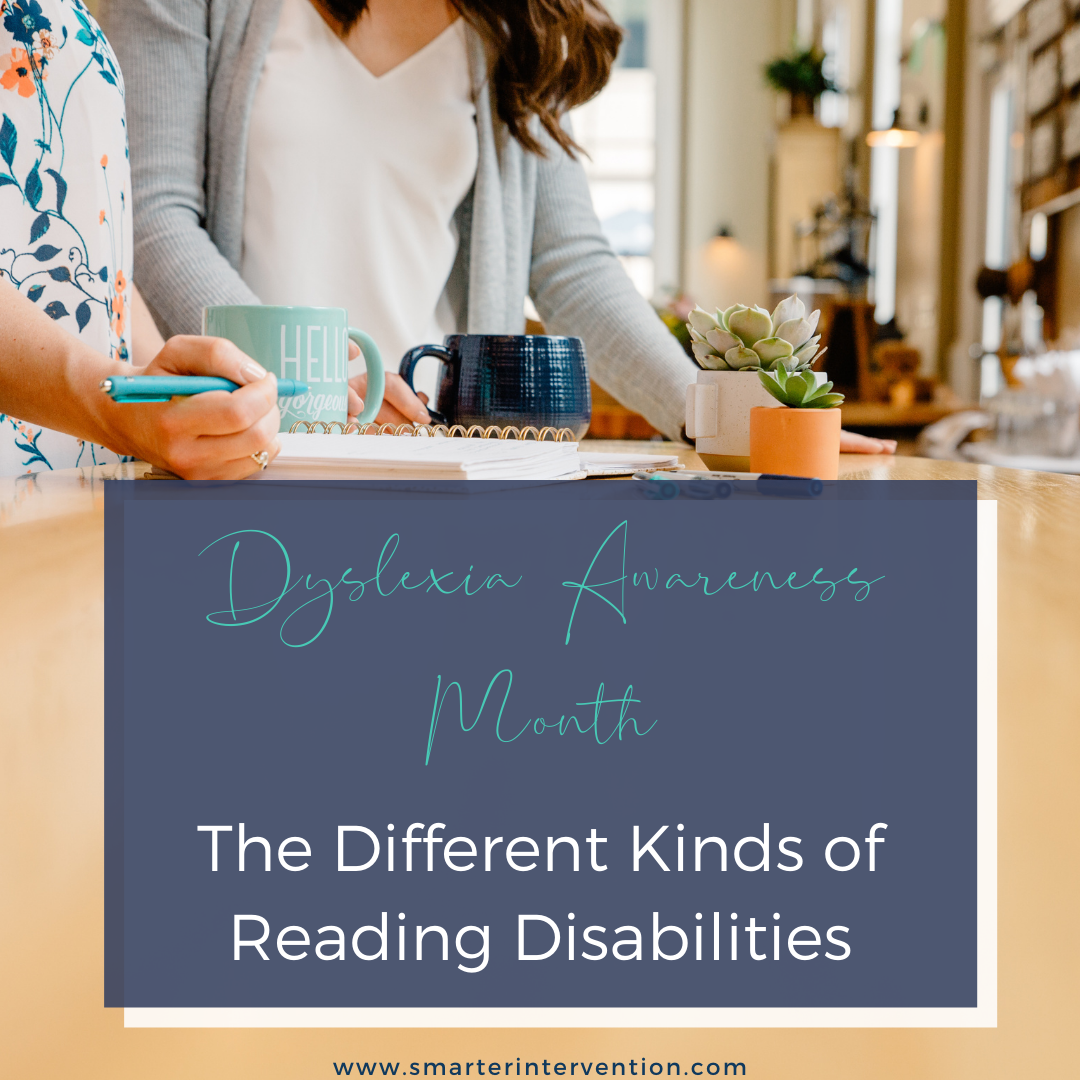Science-based literacy resources and articles
for families, educators and schools
Search by Category:
Categories
- Advocacy
- Authentic Literature
- Business
- Comprehension
- Data Tracking
- Differentiation
- Dyslexia
- Evaluation and Assessment
- Executive Functioning
- Games & Activities
- Helping My Child At Home
- How To
- IEP/504 Plan
- Lesson Planning
- Math
- Online Intervention
- Organization
- Parents
- Phonics
- Phonological Awareness
- Reading Comprehension
- Reading Fluency
- Research
- SLP
- Spelling
- Vocabulary
- Writing
The Reason 66% of Students Aren't Reading on Grade Level
When we discussed this statistic with the team - it got heated. If you know us at all, then you know that we believe every child deserves success and the fact that two-thirds of them are not able to access grade-level materials is gut-wrenching. We did some digging and realized that the reason that 66% of 4th-grade students are not reading at grade level is that…
How Many Students are Actually Reading Below Grade Level?!
If you know us well you know we LOVE statistics and data (if you‘re a data nerd too, you can sit with us - and if you’re not, that’s all good too because we’ve got you covered!!!)
We were reviewing the statistics that were pushed out by the US Department of Education in 2019 reviewing the National Report Card as it pertains to students and their ability to read at a proficient level by the time they are in the 4th grade.
And if you know these studies, the statistics are shocking. Keep reading to learn how many students are ACTUALLY below grade level when it comes to reading (the number may surprise you!) and to see how we can reverse this trajectory.
Vocabulary is More than Morphology
Don’t get us wrong - we fully believe that morphology is important! In our program, we have two full levels devoted to morphology.
We need to recognize, however, that morphology is only a very small piece of vocabulary and we need to be explicitly teaching vocabulary with ALL of our students, regardless of age or level. Read on to learn exactly what vocabulary instruction needs to include to support vocabulary development.
What Students Need for Effective Comprehension & Writing in the Classroom
Today, we’re diving right into a pretty loaded topic! We wanted to start the conversation around what students need in order to effectively comprehend lessons in the classroom and what they need to be able to write effectively to demonstrate their knowledge.
Now obviously, this isn’t something we can fully communicate/solve in a single blog post. But … we do have a really good starting point! And, don’t worry, we also have some really good follow-up coming your way!
The Key to Advocating for Your Students in IEP Meetings
Have you ever felt dismissed, talked over, or doubted in your intervention? When I walked out of the school after my first IEP meeting, I had this awful feeling of defeat knowing that I wasn’t taken seriously, but worse, I wasn’t able to advocate for my student they way I wanted to and knew I could. Keep reading to learn about the key to advocating for your students in IEP meetings.
Addressing Overwhelm and the Need to be Perfect in Your Intervention
Last spring, so many of us had to make an abrupt switch to online learning. It was expected that this transition be seamless, and for so many, it was quite the opposite of that. Let’s be honest, it was hard. We weren’t sure how we were going to make online learning effective, how to transition all materials to be used virtually, and the hardest part… we weren’t able to see our students in person anymore. It was tough. But, over time we were able to adapt. We came up with ways to transition materials to an online format and continued to hold our connections with our students even though we weren’t with them. We were finally starting to feel comfortable when everything changed again…
Doing Your OWN Research in Your Intervention
As literacy interventionists, we are told all the time about the importance of “research-based” intervention but no one tells us that this should include our own research! Click through to read more.
The Wrong Ways to Use Data
When we are trying to determine which areas we should focus on with our students we are using our data to provide a guide, a roadmap.
But one of the biggest mistakes we see (we know because we’ve been there) is that we aren’t using data to drive decisions because of two big blocks.
How to use Games in Literacy Intervention
Games are a great way to differentiate your lessons to target specific skills with your students. Every week, we take data to see where our students are growing, where they consistently do well, and where they need extra support. When we find these holes and gaps, we supplement with a review game to target tricky skills.
How to Teach Spelling
Alright friends, many of you have been asking us this question and we’re excited to share exactly how we teach spelling to our struggling readers and writers!
Here’s the truth - spelling is tricky!
And it’s usually one of the last abilities to fully progress for our struggling students. We tell students and parents that we expect growth to evolve in phases. We typically start at the sound level (making sure that students can associate sounds to letters), then we move up to the syllable level, then to the word level, phrase level, sentence level, and then finally the passage level.
Dyslexia & Co-Occurring Difficulties
We wanted to take this conversation a step further and dig into some common co-occurring struggles we see in our students with dyslexia. Specifically language, attention, mathematics, and social-emotional difficulties.
So let’s dive in!
The Different Kinds of Reading Disabilities
Many students struggle to learn how to read effectively or efficiently.
RESEARCH INDICATES THAT THERE ARE THREE DIFFERENT TYPES OF READING DISABILITIES.
These three types of disabilities relate to (if you know us…you’re probably guessing it right now!!!)
YEP…..
The Literacy Processing Triangle
How to Progress Monitor Online
If you have been with us for a while, then you know we get super excited when it comes to data. We love using it to write treatment plans for students, to monitor growth, to assess whether or not the student needs something different, etc. We use data to make every decision in our intervention and we wouldn’t be able to run our practice effectively without it.
So, when we transitioned to seeing students online, the natural question was how in the world we’d be able to assess and progress monitor virtually.
Why Are We Doing This in Literacy Intervention?!?
We know that we have a massive reading gap for so many students…
Knowing what we know - we keep questioning -
Why do we have so many struggling students when the research is clear on what evidence-based practices MUST look like to support our struggling readers?
Ultimately, there are a LOT of potential answers and factors at play when we consider this question but for us, it really comes down to 3 major categories. And…because we always teach our students to use graphic organization strategies to make sense of and organize information, we felt compelled to do the same!
The Thing You Have Been Told is the Best for Your Students is Actually Hurting Your Literacy Intervention!
As more and more barriers are put up in education, it makes it harder for our kids to get the help that they need. We want to encourage you to make reading intervention simple. If we overcomplicate things it is only making it harder for our students to access, for us to deliver, and for students to get what they need. It doesn’t have to be hard. Let it be easy! Click through to find out the ACTUAL approach that will make literacy intervention effective for your students and easier for you!
How an SLP is Serving Students Through Literacy Instruction
If you have been following us for a while, you know that we are super passionate about SLPs being a perfect fit to deliver literacy instruction. Their unique background lends itself so well to supporting students when it comes to reading and writing support. This week we want to spotlight an incredible SLP who has also been serving students through literacy instruction. Open to watch our video interview!
How to Interpret Evaluation Results
Today we wanted to take a little time to discuss how to interpret evaluation results, specifically how to determine whether a students standardized, norm-referenced test scores fall within the average range.
When we look at interpreting evaluation results, there are a number of things we need to consider but the first thing we absolutely must consider is whether scores are falling into an expected area or not. This requires that we go back to our statistics class in understanding the standard bell curve.
How to Teach Syllable Types - Intervention Tip of the Week
When working with struggling readers, we find it critical to make sure that we are providing frameworks or memory supports wherever possible. Whenever we can lump concepts into bigger picture concepts it really helps our students out! One amazing place to do this is by teaching the six syllable types. We have TONS of information on the six syllable types in our blog post here >>What’s This About Six Syllable Types<<
The great thing about teaching syllable types is that we can lump phonics patterns into their syllable types to provide bigger picture buckets for students.



















